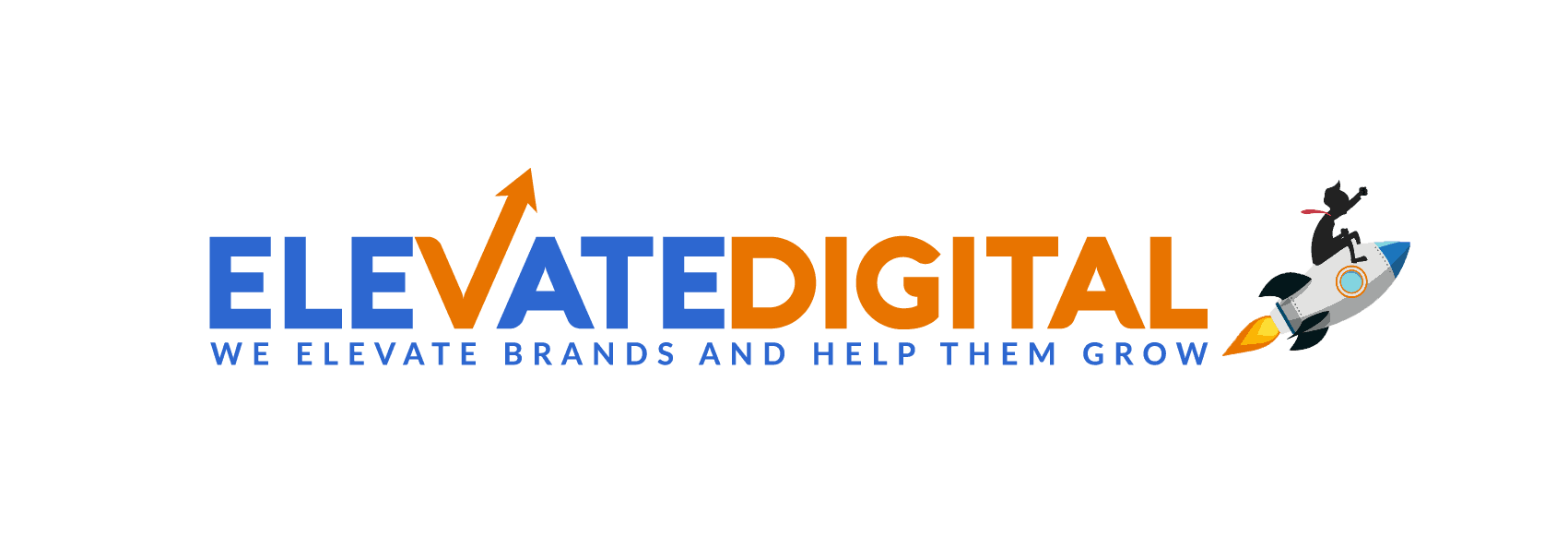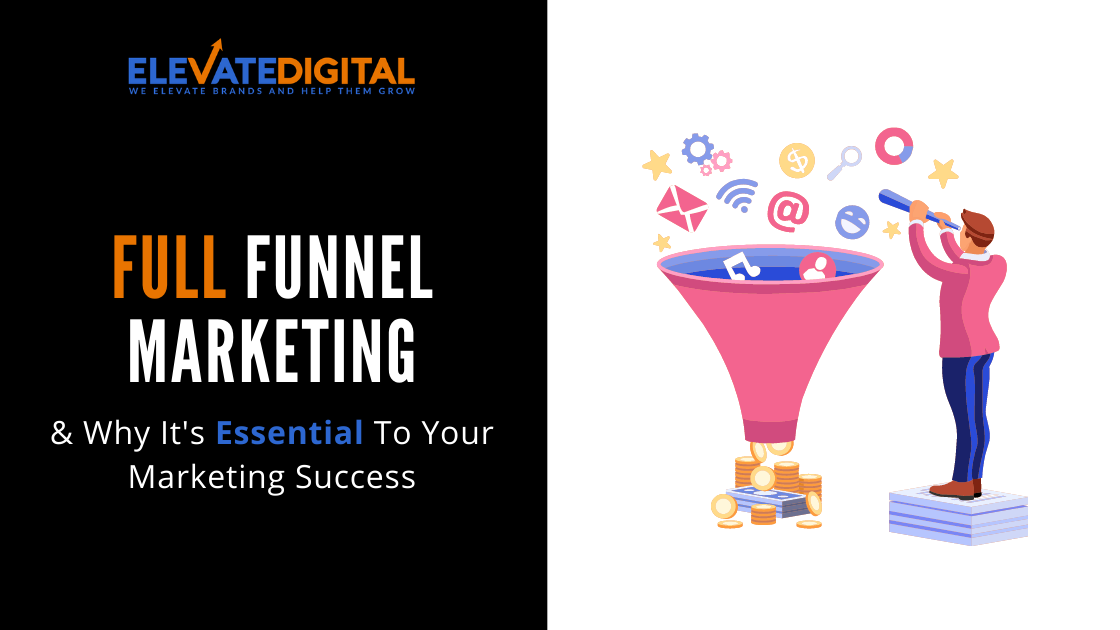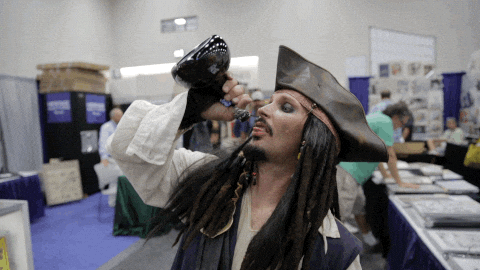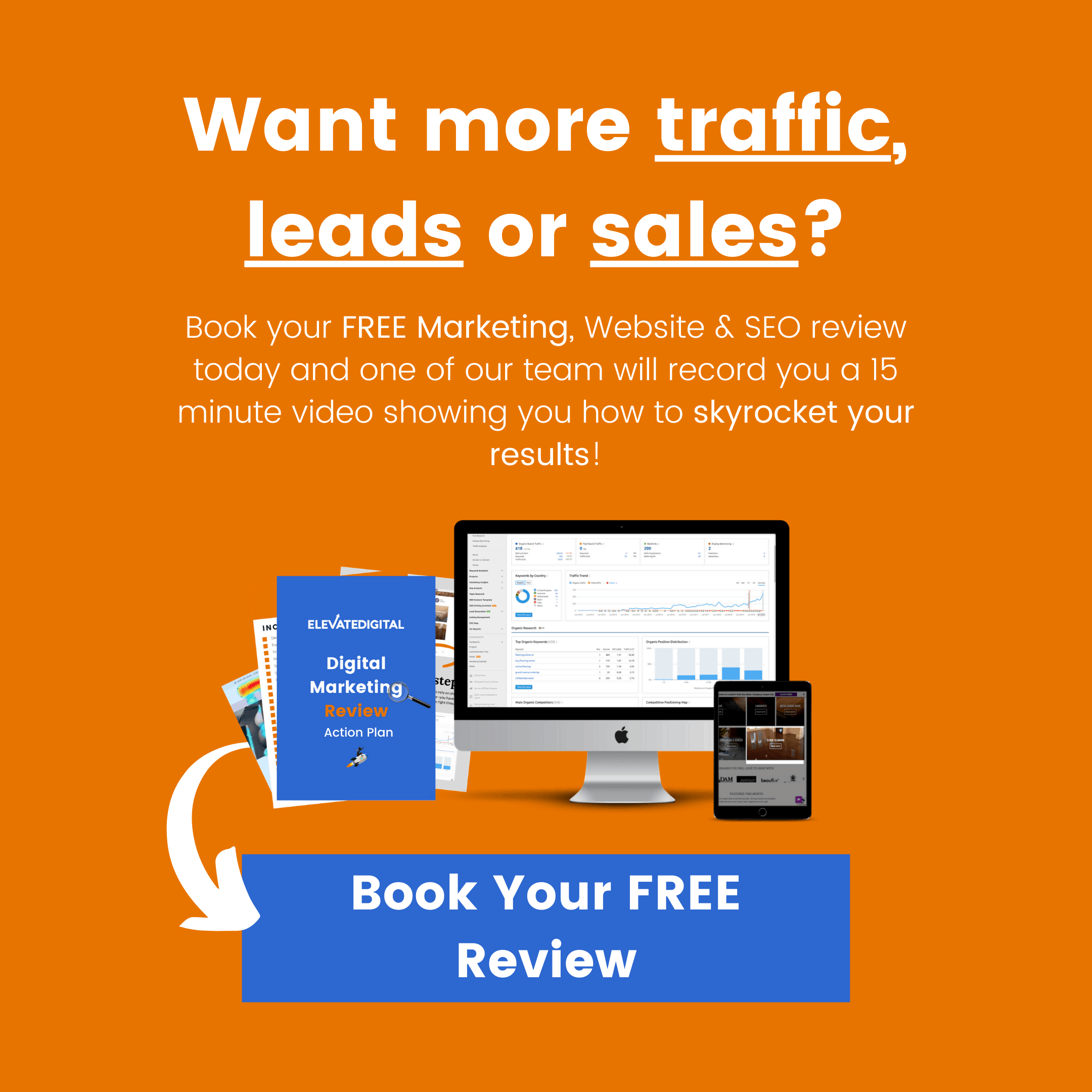Picture this: you, wandering the allegorical desert of marketing, see the dark clouds rolling in and spot opportunity.
You bring forth a container with a small opening to catch as much water as possible, but only result in filling up a portion of the container….
What you lack, my friend, is a proper funnel.
Creating A Full Funnel Marketing Strategy
While you obviously can’t expect raindrops to magically drift into a small opening…the same can be said for customers.
Full funnel marketing is a way to imagine this process of developing potential customers into actual customers through marketing. There are three main steps of this model:
- Awareness: This is the first, widest part of the funnel and where you want to focus the majority of your attention. Here you want to consider what your customers are searching for or thinking about BEFORE they even know they need your product/service. For example, let’s say you’re a financial advisor and help people create passive income streams. You can tell me all you want about passive income, but chances are I’m just not hearing it as I don’t even know that I need it right now! As such other things in my life will naturally take priority. However, maybe what I am experiencing right now, is pressure from mounting credit card debts. Therefore, if you can provide me with some content on how to tackle this problem in a simple and easy way, chances are I’ll be ready to engage. The key here is to help people with their current “symptom-level” problems, and then help them to see how your brand or business can help with the root.
- Consideration: This narrower section is where audiences start to consider purchasing your product or service, moving beyond mere awareness. At this stage, your audience now knows you exist and has recognised that you may be able to help. But maybe they don’t fully understand how it works. As such, you’ll want to give people some clarity along with the benefits of working with you or using your product.
- Conversion: Finally, this is where potential customers are converted into actual customers. If they haven’t already bought already, they may have some concerns, or maybe just need a reason to buy right now. At this stage, you’ll want to consider using testimonials, case studies or offer stacks to give people a reason and the confidence to take action here and now.
How to use it at each stage of the buyer journey
Full funnel marketing is only valuable if it is used along each stage of the buyer process. When using this model, you need be conscious of your marketing strategy through each stage.
For example, if an advertiser only focuses on that top of the funnel – brand awareness – it will be much harder to attain conversion as potential customers won’t really know what you do or how you can help.
However, if you’re only ever focused on the bottom of the funnel, a huge portion of your potential customers will never get to hear your message as they simply won’t see how it applies to them at this stage.
As such, no matter how great your USP or your features and benefits might be, it’ll just fade into noise, because their CURRENT problems will always take priority.
What also happens when you only focus on the bottom of the funnel is that you quickly end up in a sea of shark infested waters and competing against the rest of your industry who are fishing for those “bottom of funnel” customers. However, if you’ve been the one giving value and helping me realise I even had a problem in the first place… you instantly become the “go-to” company in my mind, and there’s a good chance I won’t even be looking at the competition!
That’s what you want to achieve here!
The key is to develop content that speaks to each stage of the funnel and serves to progress and relationship and guide people through to the next stage. This can be done through lead magnets, email nurture sequences and re-targeting ad campaigns that work in a progressive and sequential order.
After all, most customers will NOT buy on the first interaction with you.
Why to get the marketing right at each stage of the funnel
Now, suppose a strategy does “account” for each stage, but fails to get the marketing right on the level of conversion. Well, a leaky funnel isn’t really a funnel at all.
Fine tuning marketing strategies for each stage is crucial. If a marketer successfully builds brand awareness and gets potential buyers to consider purchasing their product, but has built a wonky or confusing website where purchases are actually made, the overall strategy could fall flat. This business didn’t get the messaging right across all three stages.
Eventually, with the right tools and strategies involved in full funnel marketing, businesses could potentially turn a desert into a lush oasis. The trick is in understanding the movement and development of potential buyers as a larger process with distinct stages, all requiring their own marketing strategies.
Funnel Running Dry?
Here’s a scary truth…Most websites we see are leaking up to 90% of their potential customers. Book your FREE website and marketing review today and we’ll record you a 15-minute personalised video showing you how to capture at least HALF of that without spending a penny more on marketing.
- What Is Backlink Profile & Why Is It Important For SEO - June 22, 2021
- How To Use Email Marketing To Increase Sales - June 15, 2021
- Is Buying Backlinks Bad For SEO? - June 8, 2021





